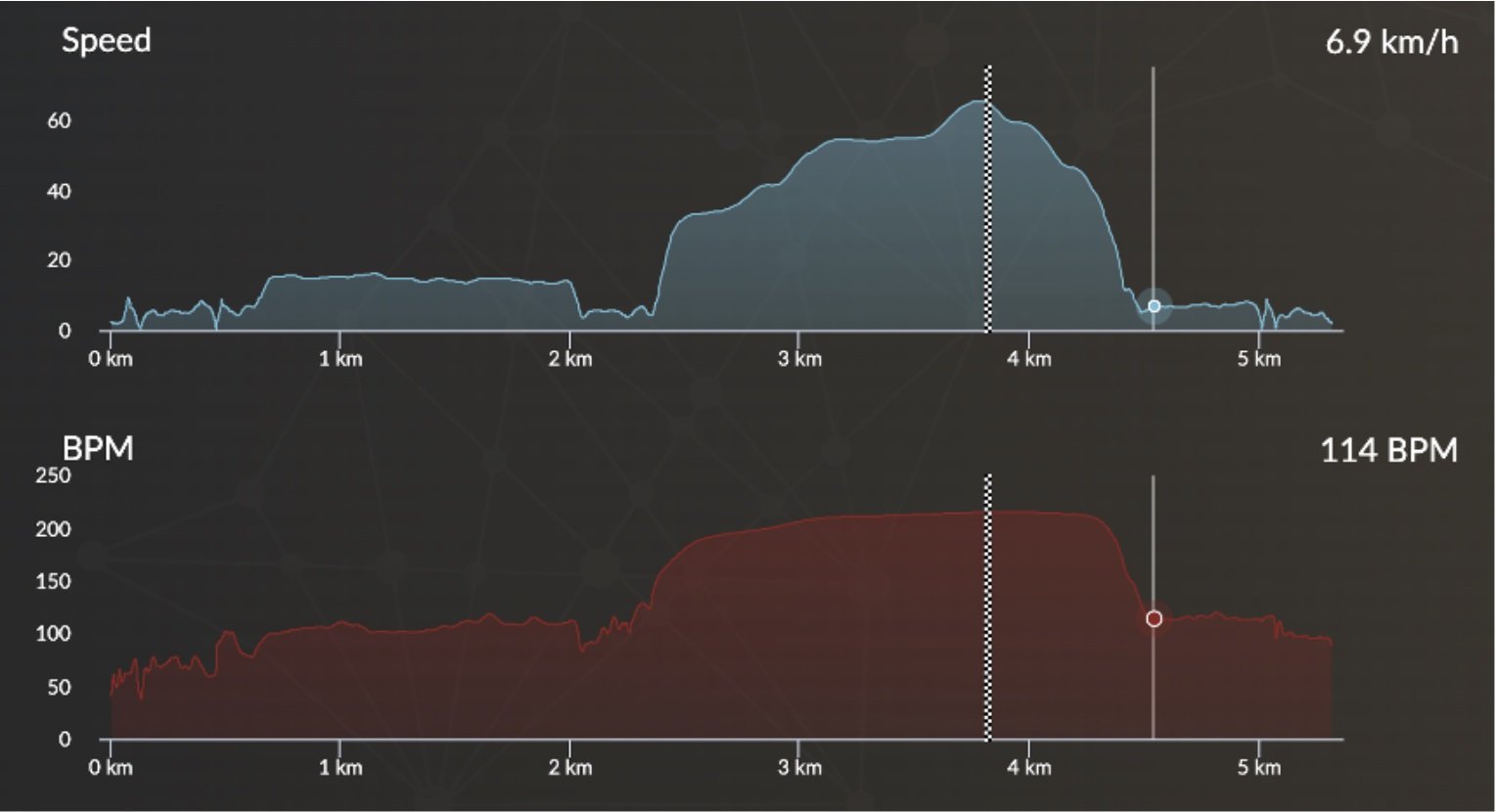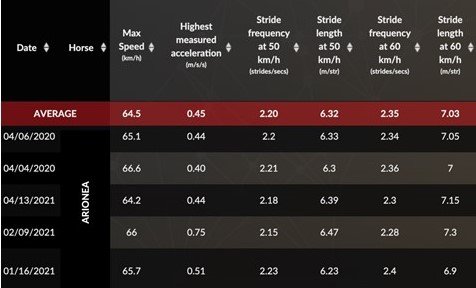How to adapt the race distance to win
In association with Arioneo
How often have you heard that a horse is bred to race a certain distance? That may be accurate, but sometimes stride length and frequency data say otherwise. Some research shows the interest in modelling a horse’s race distance using locomotion data. Thus, we could theoretically use the measurement of a horse’s stride frequency to determine his ideal distance.
Although it may not appear to be a big deal, extending 100 or 200m to the regular race distance might help a horse’s season in specific circumstances.
Madame Arionea’s story – Concrete example
· 4yo filly that we will call Madame Arionea
· During her 2yo season, she raced over 1100m (5.5f) and ran well
· During her 3yo season, she didn’t show any progress even though she showed good fitness abilities during training
Why did this promising mare fail to advance in her three-year-old season over 1100m (5.5f) while demonstrating strong physical ability in training?
1. Assessing her fitness
To begin analysing Madame Arionea’s underperformance, we will review her cardiac data from her three-year season.
We can evaluate Madame Arionea’s recovery and thus quantify her fitness level by studying the evolution of heart rate and speed at the same time. If it is insufficient, this may explain her poor performances.
Heart rate and speed curves from the Equimetre platform
Madame Arionea recovers rather effectively after her effort, as seen by a fall in the heart rate curve at the same time as the decrease in the speed curve.
Analytics - Equimetre platform
The data in this table shows the various exercises performed at speeds greater than 60km/h. This enables us to assess recovery capability and its progression following a high-intensity activity.
The data provided above allow us to confirm that Madame Arionea is in excellent physical condition.
Indeed, her recovery ability is classified as normal both immediately after the activity and 15 minutes afterwards.
About Equimetre – Racehorse Monitoring system
2. A better understanding of the stride profile
Following this discovery, another type of data should be investigated: locomotion. Stride length and stride frequency analysis has been suggested as a technique for modelling a racehorse’s preferred distance. Thus, by quantifying a horse’s stride frequency, one may possibly determine the race distance over which he performs best.
Good to know
· According to the theory, a large stride length paired with a less remarkable stride frequency correlates to a miler or stayer stride profile. A profile that combines a very high stride frequency with a less spectacular stride length, on the other hand, belongs to a sprinter.
· It is important to remember that horses are living beings and high-level athletes, and that these principles on the pair stride length/frequency pair do not represent a precise science but provide valuable references.
To assess Madame Arionea’s stride abilities, we shall examine her stride frequency and length at a speed of 60 km/h rather than at top speed. This enables us to make appropriate comparisons between training sessions and investigate this parameter under the same settings.
From the above data, we can define Madame Arionea’s stride profile.
Because her stride frequency does not enable her to compete with horses with the profile of a Sprinter, this mare would be better comfortable at a distance slightly longer than 1100m (5.5f).
3. Madame Arionea’s acceleration strategy
Let’s have a look at Madame Arionea’s acceleration strategy to round up this examination. This involves measuring her change in stride length and stride frequency during the training’s acceleration phase. This technique enables us to objectively assess Madame Arionea’s acceleration.
Madame Arionea reaches her maximum speed by increasing of her stride length (green curve) first. What does this tell us? Her acceleration time will be longer, but this will allow her to save her energy since the heart rate is based on the horse's stride rhythm. In a longer stride, she breathes longer, and inhales a greater volume of air. Thus, the race distance chosen should allow Madame Arionea to take the time necessary to reach her maximum speed during the final sprint.
WHAT DECISION DID THE TRAINERS MAKE REGARDING THIS ANALYSIS?
Given Madame Arionea’s positive 2-year-old season over 1100m and her locomotion data, the trainers decided to progressively increase her racing distance and attempt her over 1300 / 1400m (6.5f / 7f).
Madame Arionea was not monitored throughout her two-year-old season, but we can make the following assumptions. The mare’s locomotion changed once she gained strength and endurance. Her stride length grew while her stride frequency decreased. As a result, for her to perform successfully, her racing distance needed to be increased to provide her time to accelerate.
Madame Arionea won her first race over 1300m (6.5 f), and never race again under 1300m.
The gait of a horse can change as he ages. For example, even if a horse had a good sprint season as a two-year-old, his locomotion evolution must be quantified. You may check that the distance chosen for future races is adequate for his locomotor profile this manner.






